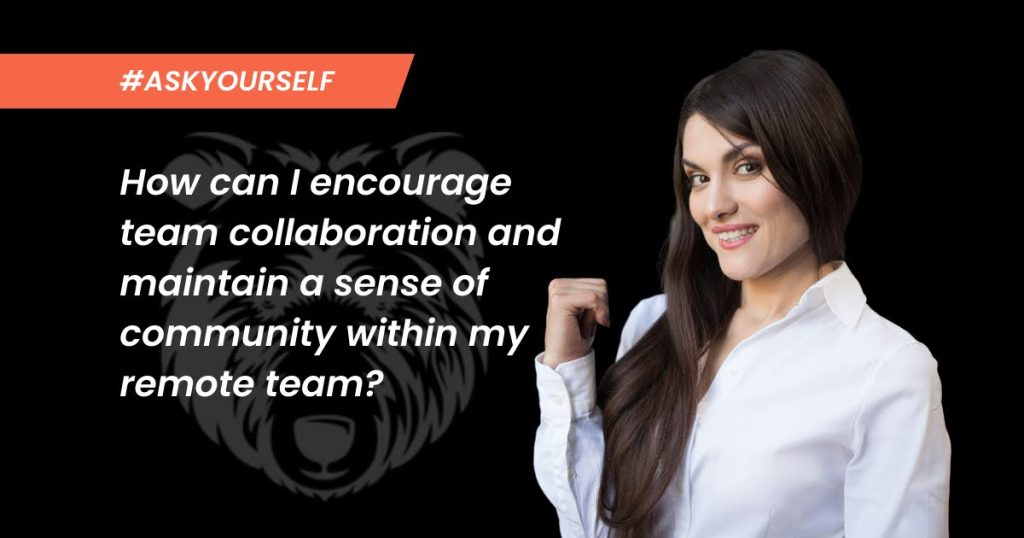Mastering remote team communication strategies is essential in today’s digital landscape, as businesses continue to embrace remote work to adapt to the changing work environment.
In this article, we will explore the importance of effective communication for remote teams, common challenges they face, and best practices to ensure seamless collaboration, empowering your organization to thrive in the modern digital workplace.

Do you ever feel like your remote team is struggling to stay connected, leading to misunderstandings, missed deadlines, and decreased productivity?
It’s a fairly common sentiment in the workplace. A staggering 86% of employees and executives cite ineffective communication as a primary reason for workplace failures.
As more companies embrace remote work, digital agency owners, e-commerce merchants, and other online entrepreneurs are left searching for ways to address these pain points.
That’s where remote team communication strategies come into play.
Effective remote team communication strategies empower organizations to maintain a connected, engaged workforce by overcoming communication challenges, employing best practices, and utilizing appropriate tools to facilitate seamless collaboration.
Properly implemented, remote team communication strategies not only enhance team cohesion but also contribute significantly to the overall growth of a business. In fact, companies with effective communication practices are 4.5 times more likely to retain their best employees and enjoy a 20% lower turnover rate.
Moreover, a study by McKinsey Global Institute found that improved communication and collaboration through social technologies can boost productivity by 20 to 25%.
When employees can communicate clearly and effectively, it leads to faster decision-making, better problem-solving, and increased innovation. This, in turn, enables organizations to stay agile, adapt to market changes, and maintain a competitive edge in their industry.
By prioritizing remote team communication strategies, you’ll set the foundation for a thriving, growth-oriented remote work environment.
The Benefits of Effective Communication: Unleashing the Power of Connection For Your Growing Business

Effective communication lies at the heart of every successful organization. When team members and leaders can share ideas, provide feedback, and align on objectives, businesses thrive.
In this section, we’ll explore the numerous benefits of effective communication, demonstrating its transformative impact on various aspects of business performance.
- Improved productivity: Companies that harness the power of effective communication through social technologies can boost worker productivity by 20 to 25%, according to the McKinsey Global Institute.
- Higher employee engagement: Gallup’s research shows that organizations with highly engaged teams enjoy 21% greater profitability than those with lower engagement levels.
- Reduced turnover rates: The Society for Human Resource Management (SHRM) found that companies with strong communication practices experience 50% lower employee turnover rates.
- Faster problem-solving: A Harvard Business Review study revealed that teams with open communication are able to make decisions and resolve issues 10 times faster than those with poor communication.
- Enhanced customer satisfaction: The Aberdeen Group reported that organizations with well-connected employees see a 17% increase in customer satisfaction rates.
- Better project outcomes: The Project Management Institute (PMI) found that businesses with effective communication are 3.5 times more likely to successfully complete projects.
- Increased innovation: The University of Southern California’s Centre for Effective Organizations discovered that companies with a robust communication culture are 3.5 times more likely to outperform competitors in terms of innovation.
- Higher employee satisfaction: Salesforce’s research indicates that employees who feel heard at work are 4.6 times more likely to feel empowered to perform their best work.
- Increased company revenue: Watson Wyatt found that businesses with effective communication practices experience a 47% higher total return to shareholders.
- Better crisis management: According to PwC, organizations with efficient crisis communication plans maintain stakeholder trust and experience fewer negative impacts on their reputation during a crisis.
- Stronger brand reputation: Weber Shandwick’s research shows that companies with solid internal communication strategies are more likely to have a positive brand reputation, resulting in increased customer loyalty and higher sales.
- Enhanced adaptability and change management: Prosci’s study revealed that businesses with effective change communication are 3.5 times more likely to outperform industry peers, as they can adapt more quickly to new challenges and opportunities.
The benefits of effective communication stretch across various aspects of an organization’s performance, from productivity and innovation to employee satisfaction and customer loyalty.
Investing in strong communication strategies today, so your growing business can unlock its full potential and create an environment where success is not only possible but inevitable.
Common Communication Challenges in Remote Teams and How to Overcome Them

Remote teams often face unique communication challenges.
A recent study reports that remote workers report that 48% of communication issues occur due to an inability to accurately read tone in written messages, leading to misunderstandings and conflicts.
Additionally, remote teams face other hurdles such as time zone differences, feelings of isolation, and an overreliance on digital communication tools. Here are some common communication challenges and practical solutions to help your remote team overcome them:
- Misinterpretation of Tone: When written communication is the primary mode of interaction, it can be easy for team members to misinterpret the tone of messages. To overcome this, encourage team members to seek clarification when needed. Furthermore, use video calls whenever possible to provide context and clarity through facial expressions and body language.
- Time Zone Differences: Time zone disparities can make real-time communication difficult and cause delays in response times. To address this issue, schedule meetings at times that accommodate all team members, and encourage asynchronous communication, such as emails or collaboration tools, for non-urgent matters. Consider using tools like World Time Buddy to find times that work for everyone and prevent unintentional exclusion.
- Feelings of Isolation: Remote employees may feel isolated, leading to disengagement and decreased morale. To foster a sense of belonging, create opportunities for social interaction, such as virtual team-building activities, and encourage team members to share personal updates during meetings.
- Overreliance on Digital Tools: While digital tools are essential for remote team communication, relying on them too heavily can lead to excessive screen time and decreased productivity. Encourage team members to take regular breaks from screens and consider implementing “no-meeting” days to allow for focused work without interruptions.
You must identify these common challenges within your organization and take proactive steps to address them. This way, you’ll create a more connected and effective remote team environment.
Implementing these strategies will strengthen communication, enhance collaboration, and ultimately contribute to the growth and success of your organization.
Communication Tools and Platforms: The Backbone of Remote Team Communication

In today’s digital landscape, numerous communication tools and platforms are crucial in facilitating seamless remote team communication. These tools help bridge the gap between team members and ensure everyone stays informed, connected, and engaged.
Here are some essential tools and platforms to consider for your remote team:
- Video Conferencing: Video calls help simulate face-to-face interactions, allowing team members to understand each other’s expressions and tone better. Popular platforms like Zoom and Microsoft Teams provide high-quality video conferencing, screen sharing, and recording features.
- Instant Messaging: Instant messaging tools, such as Slack and Voxer, enable real-time communication, allowing team members to quickly share updates, ask questions, and collaborate on projects.
- Project Management: Platforms like Trello, Monday.com, Teamwork, and Asana offer an organized, visual way to manage projects, assign tasks, and track progress. These tools help remote teams stay aligned and ensure that everyone is aware of their responsibilities and deadlines.
- File Sharing and Collaboration: Tools like Google Drive and Dropbox provide a centralized location for storing, sharing, and collaborating on documents. This makes it easy for remote teams to access and work on files together, regardless of their location.
- Virtual Whiteboarding: Virtual whiteboarding tools, such as Miro and MURAL, allow remote teams to brainstorm, plan, and visualize ideas together in real-time, replicating the experience of an in-person whiteboard session.
Incorporate these communication tools and platforms into your remote team’s daily routine. In so doing, you’ll create an environment that fosters collaboration, encourages open communication, and ultimately drives the success of your organization.
Best Practices for Remote Team Communication (According to the Experts)

Effective remote team communication goes beyond using the right tools and platforms. Here are some expert-recommended best practices to help you foster strong communication within your remote team:
Set clear expectations.
Establishing communication guidelines and expectations is essential for remote teams. Jason Fried, the co-founder of Basecamp, suggests setting expectations for response times, availability, and preferred communication channels to avoid misunderstandings.
Encourage overcommunication.
Tim Ferriss, author and entrepreneur, advises remote teams to err on the side of overcommunication. Sharing more information than necessary can help ensure that everyone stays informed and reduces the risk of miscommunication.
Promote a culture of transparency.
Buffer CEO, Joel Gascoigne, emphasizes the importance of transparency in remote teams. Encourage team members to share their progress, challenges, and ideas openly to create a trusting and collaborative environment.
Leverage video communication.
Remote work expert and author, Lisette Sutherland, recommends using video communication whenever possible. Video calls help build rapport and trust among team members and can reduce misunderstandings that may arise from written communication.
Schedule regular check-ins.
Entrepreneur and angel investor, David S. Rose, suggests scheduling regular check-ins to maintain strong communication within remote teams. Weekly one-on-one meetings and team updates can help keep everyone in the loop and address any potential issues before they escalate.
Practice active listening.
Remote leadership expert, Kevin Eikenberry, emphasizes the importance of active listening in remote team communication. Encourage team members to ask questions, paraphrase what others have said, and provide feedback to ensure everyone is on the same page.
Celebrate successes and recognize achievements.
Hiten Shah, co-founder of Crazy Egg and KISSmetrics, recommends celebrating successes and recognizing individual achievements to create a positive remote work culture. Publicly acknowledging accomplishments can help boost morale and motivate remote team members.
Encourage asynchronous communication.
Amir Salihefendić, the founder of Doist, advises embracing asynchronous communication to give team members the flexibility to work at their own pace and avoid unnecessary interruptions. Encourage the use of tools like email, project management platforms, and message boards for non-urgent matters.
Designate a “Remote Work Champion.”
Remote work expert, Laurel Farrer, suggests designating a team member as a “remote work champion” who is responsible for advocating and supporting remote team communication]. This person can help address communication challenges, provide guidance, and ensure that remote team members feel supported.

Implementing these best practices, as recommended by experts in remote work and entrepreneurship, will help you cultivate effective communication within your remote team and ensure the success of your organization.
Action Steps to Implement Effective Remote Team Communication Strategies

Implementing effective remote team communication strategies may seem daunting, but with the right approach, you can ensure seamless collaboration and a productive work environment. Here are some action steps to help you get started:
- Assess your current communication practices. Begin by evaluating your team’s existing communication habits and identifying areas of improvement. This will help you determine which strategies are most needed and which tools might be most useful.
- Choose the right tools and platforms. Based on your assessment, select the communication tools and platforms that best fit your team’s needs and preferences. Remember to consider factors such as ease of use, functionality, and integration with other tools.
- Establish clear communication guidelines. Create a communication policy that outlines expectations for team members, including response times, preferred communication channels, and rules for sharing information. This helps set clear boundaries and prevents miscommunication.
- Train your team. Ensure that all team members are trained on using the chosen communication tools and platforms, as well as the established communication guidelines. This helps create a cohesive communication environment where everyone is on the same page.
- Monitor and adjust. Regularly review and assess your remote team communication strategies to ensure they remain effective. Be open to feedback from team members and make adjustments as needed to continually improve your communication practices.
Take the time to go through these action steps. Incorporate the expert-recommended best practices discussed earlier and develop your own effective remote team communication strategies that foster collaboration, productivity, and growth.
Conclusion: A Final Word About Remote Team Communication Strategies

In conclusion, remember that effective remote team communication strategies are the cornerstone of a successful remote work environment.
Embrace the challenges that come with remote communication and view them as opportunities to grow and adapt.
As you invest time and effort into understanding your team’s unique communication needs, implementing the right tools, and fostering a culture of open dialogue, you’ll create a stronger, more connected workforce.
In the ever-evolving landscape of remote work, make it a priority to stay informed, be open to change, and continuously improve your communication strategies. Your team’s success and the growth of your business depend on it.
Want to learn more about how building effective communication in remote teams can help grow your business? Get in touch with the GruntWorkers team today, and let’s work together to ensure your remote team thrives!

